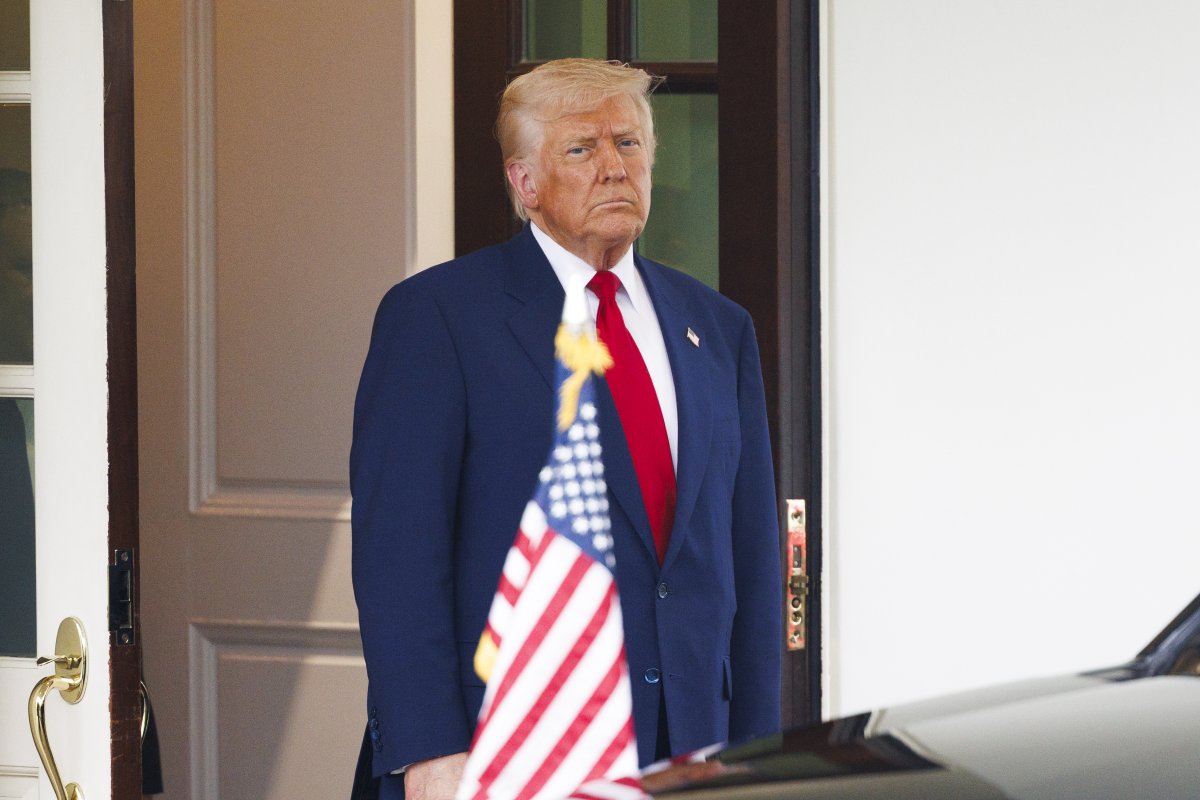Apple is planning to source more iPhones from India in an attempt to avoid the high tariffs President Donald Trump has imposed on China, according to an article in The Wall Street Journal.
The reported shift to India, with which China has a close and often hostile rivalry, could be a double blow to the Asian economic giant whose decades-long dominance in manufacturing Apple‘s flagship iPhone may be coming to an end.
Newsweek has reached out to Apple for comment via email.

AP
The Context
Trump’s escalating trade war with China sent Apple’s stocks tumbling to its worst three-day performance in 25 years.
The president announced a 34 percent reciprocal tariff on China last week, atop the 20 percent levy, in a move the Trump administration says is aimed at spurring the country to crack down on fentanyl trafficking. China responded with its own retaliatory 34 percent tariff on U.S. goods.
On Monday, Trump doubled down on the tariffs, announcing he would impose another 50 percent levy if China didn’t revoke its tax on American products. If implemented, that would push U.S. tariffs on Chinese imports to a total of 104 percent.
Meanwhile, India has been hit with a 26 percent tariff; less than half of China’s current 54 percent, and only a quarter of its final 104 percent tariff if Trump follows through with his threat.
How Much Tariffs Could Add to iPhone Cost
The current 54 percent tariffs on Chinese goods could add around $300 to the $550 hardware cost of an iPhone 16 Pro. That model, with 256GB, currently retails for $1,100. That cost could double to around $600 if Trump imposes the 104 percent tariff rate on China.
India’s 26 percent tariff would only likely add an estimated $150 to total production and shipping cost.
Trump has repeatedly suggested that companies can save money and avoid paying the tariffs by manufacturing in the United States. But labor costs in the U.S. are significantly higher than in China. Wayne Lam, research analyst at TechInsights, told the Journal that an iPhone that might cost $30 to assemble in China would cost around $300 to assemble in the U.S.
Apple would still need to import parts from overseas, thereby incurring the tariff fees. If every component was made in the U.S., the costs would be astronomical.
Apple would have to decide whether to eat the additional cost of the tariffs or pass it on to customers by increasing the price of its products.
What To Know
Apple was set to make around 25 million iPhones in India in 2025, according to the Journal. Around 10 million of those were set to stay in India for the local market. If Apple sent all Indian-made iPhones to the U.S., it could meet around half of its American demand this year.
At the end of March, Apple also flew five planes full of iPhones and other products from China and India to stockpile them in the U.S. in an apparent attempt to delay the impact of the tariffs, The Times of India reports.
Such short-term efforts may delay immediate price increases for Apple customers, as Chief Executive Tim Cook tries to negotiate a tariffs exception for Apple from Trump, something he was able to achieve during the president’s first term.
But Trump remains bullish on tariffs this term and does not appear to be backing down despite strong backlash. If Cook cannot negotiate a deal, the tariffs could accelerate Apple’s shift to manufacturing in India.
Apple has moved some production to India in recent years, with around 14 percent of its “marquee” devices manufactured there in 2024, according to a Bloomberg report.
Tariffs from Trump’s first term and former President Joe Biden‘s technological restrictions on Chinese companies have pushed the tech giant to diversify its dependence on Chinese manufacturing.
Apple has also faced financial pressures, as the cost of manufacturing through its partner Foxconn, which makes iPhones, MacBooks and other Apple products in China, has also been rising in recent years.
The loss of a production partnership with a major company like Apple would be a huge blow to Beijing. But losing out to rival India would be extra salt in the wound.
India and China have a complex and often strained relationship marked by territorial disputes and economic tensions. A major source of friction is the dispute over the largely undefined Sino-Indian border, which has sparked multiple skirmishes and military standoffs, including the Galwan Valley clash in 2020.
Beyond borders, the two nations are also engaged in a broader competition for regional influence.
India sees itself as the dominant power in South Asia, while China has deepened its ties with neighboring countries like Pakistan, Nepal and Sri Lanka through investments and infrastructure projects. India also views China’s increasing presence in the Indian Ocean, often called the “String of Pearls,” as a strategic attempt to encircle it. At the same time, India’s participation in the Quad alliance with the U.S., Japan and Australia is seen by China as a direct counter to its growing global influence.

Aaron Schwartz/AP
What People Are Saying
Trump, on Truth Social: “Yesterday, China issued Retaliatory Tariffs of 34%, on top of their already record setting Tariffs, Non-Monetary Tariffs, Illegal Subsidization of companies, and massive long term Currency Manipulation, despite my warning that any country that Retaliates against the U.S. by issuing additional Tariffs, above and beyond their already existing long term Tariff abuse of our Nation, will be immediately met with new and substantially higher Tariffs, over and above those initially set.”
Research firm Wedbush told the Journal: “If consumers want a $3,500 iPhone we should make them in New Jersey or Texas or another state.”
What Happens Next
It seems unlikely that China will revoke its retaliatory tariffs before Trump’s Tuesday deadline. If it fails to do so, the president has threatened to impose his new set of levies against China on Wednesday.





